Damp and mould
Damp and mould in your home is unpleasant and can be bad for your health and wellbeing. It can be worse during the winter when the weather is cold and wet. If you're worried about heating your home and paying your bills, please talk to us - support is available:
- Tell our Income Team if you're worried about keeping up with rent payments.
- Contact our Tenants First team for help with the cost of living.
- Read more about getting support with the cost of living.
We don’t want anyone to be living in a home with damp and mould and there are things we can all do to prevent and deal with it.
We’ve worked closely with tenants to co-produce a robust action plan which sets out what we’re doing to tackle the causes of damp and mould, and how we respond to instances that have progressed and require repair.
We treat damp and mould requests as priority inspections, so please report any concerns to us online by using the button below or phone us on 01226 787878.

Always remember 'STAR':
- Spot the signs
- Try our tips
- Act fast
- Report it
Our controlling condensation, damp, and mould booklet can be viewed below and includes helpful tips for your home.
Spot the signs
It's important to know what to look out for in your home so you can spot the signs that there might be a problem with damp and mould.
The first sign that there might be a problem in your home is condensation - misting and water droplets on windows and other cold surfaces that takes a long time to disappear.
The second sign is patches of black mould growing on your walls and ceilings.
How condensation can lead to mould growth
Condensation is usually found in the corners of rooms, on walls that face north, and on or near windows. It can also be found in areas where there’s little ventilation and air circulation, including behind wardrobes and beds, especially when they are pushed up against external walls. The water droplets soak into the wallpaper, paintwork or plaster, and in time, black mould can grow on the surface of the damp areas.
By dealing with the causes of condensation, you’ll automatically deal with the problem of mould. The good news is there are steps you can take to reduce condensation in your home.
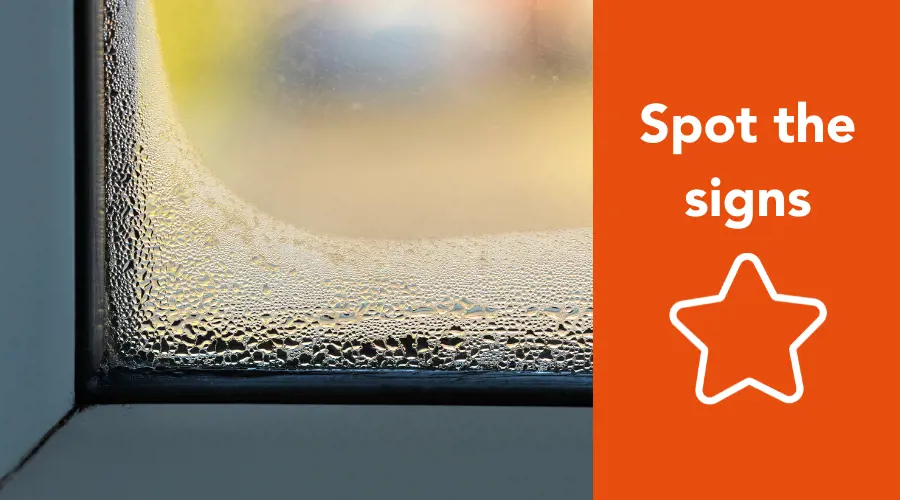
Identifying condensation, damp, and mould
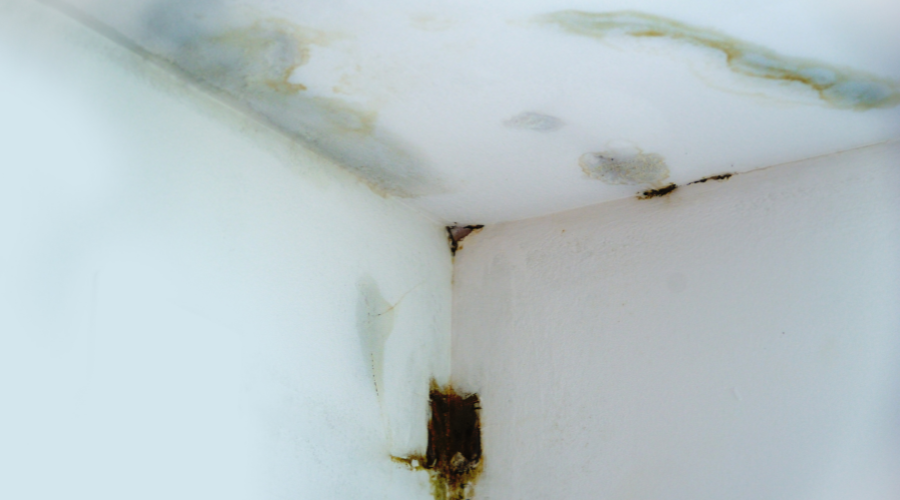
Damp caused by faulty plumbing
A leak from a toilet, shower, sink, or pipe can affect internal walls and ceilings. Damp from faulty plumbing will appear as an obvious damp patch no matter what the weather is like outside. It may get worse after a certain utility is used, for example when the shower is turned on or the toilet is flushed.
If you think you might have a leak, check around the water and waste pipes inside your home, the seals around the bath, shower, and sinks, and any external pipework, such as guttering.
Black mould rarely appears with this type of dampness because the area is usually too wet. Chemicals in waste water will also prevent mould from growing.
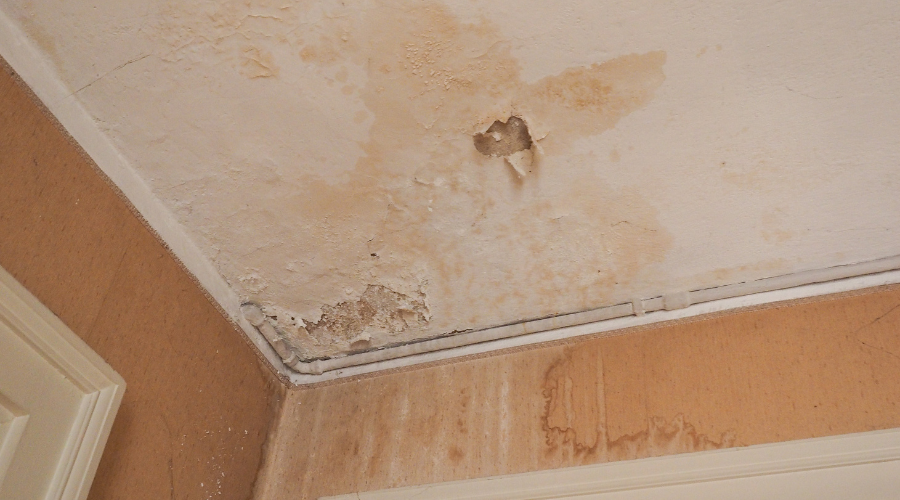
Penetrating damp
Penetrating damp is found on external walls and ceilings. It’s caused by water passing through a building defect and will appear as an obvious damp patch, particularly after rainfall. It will dry out as the weather improves.
Penetrating damp can be caused by a number of repair problems, for example:
- a leaking roof (missing roof tiles)
- a cracked wall
- missing pointing
- leaking guttering or external pipes
- a leaking drainage pipe
- rotten windows or doors
Black mould rarely appears on areas of penetrating damp. This is because the affected area is usually too wet and the water contains salt picked up when passing through the wall, which prevents growth.
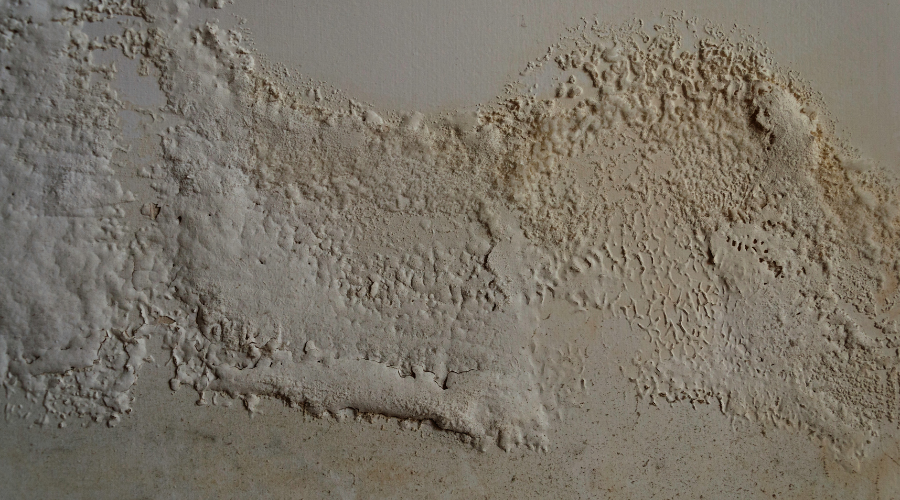
Rising damp
Rising damp is more common in older properties. It generally affects the lower part of the ground floor of a property up to the height of about 1 metre. It can look like a white ‘tide mark’ low down on the wall.
Black mould doesn’t usually come from rising damp as just like with penetrating damp, the water contains salt picked up when passing through the wall, which prevents growth.
If you think you have a leak, or rising or penetrating damp in your home, please report it to us as soon as possible so we can take action.
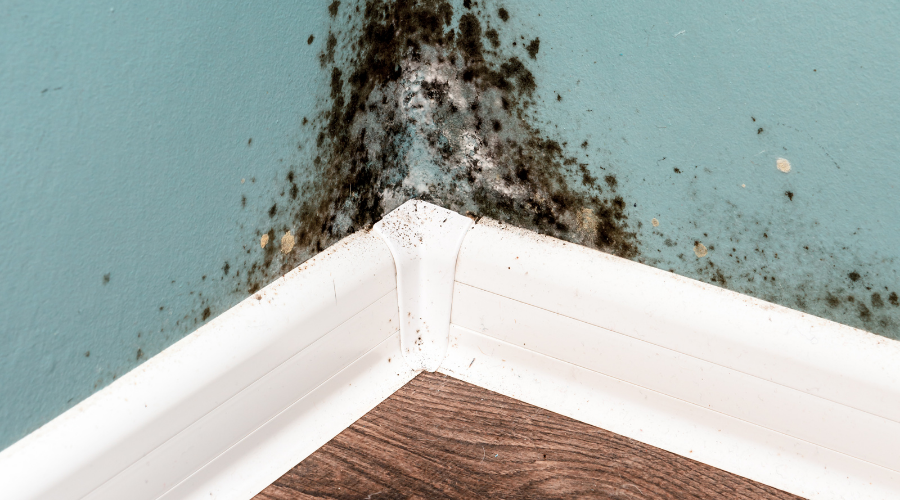
Condensation
Most black mould growth is a result of condensation. Condensation is caused by water vapour or moisture inside the home coming into contact with a colder surface, such as a window or wall. It happens mainly during the colder months, whether it’s rainy or dry outside.
There are four main factors that cause condensation:
- Too much moisture being produced within the home
- Not enough ventilation
- Cold surfaces
- The temperature of your home
Everyday activities add extra moisture to the air inside your home.
Try our tips
Try these tips to reduce condensation and black mould in your home:
Reduce moisture
- Dry clothes outside where you can or in a well ventilated room.
- Vent tumble driers to the outside or use a condensing drier.
- Use lids on pots and pans when cooking.
- Wipe down windows and windowsills every morning to remove condensation.
- Wipe down the bath or shower after use.
- Don't use portable bottled gas heaters - they can be dangerous if not ventilated, produce a lot of moisture, and are a breach of your tenancy agreement.
Increase ventilation
- Opening your window slightly or keeping your trickle vents open if you have themwill allow the air to flow around. Even just a short time (15 minutes) is effective.
- Always do this when you’ve used the kitchen or bathroom and close doors to prevent moisture in the air spreading to other parts of your home.

- If your home has extractor fans fitted, it’s important to use them. They are cheap to run and very effective.
- Keep windowsills free from clutter, furniture away from outside walls, don’t block chimneys, flues or air vents, and avoid overfilling cupboards and wardrobes, so air can flow freely.
Keep your home warm enough
- The World Health Organisation (WHO), UK Government, and The Energy Saving Trust all agree that during winter, your home should be kept between 18 to 21°C while in use.
- Where you can, keep your home at a consistent medium to low heat instead of heating some rooms a lot and others not at all.
- If you don't have heating in every room of your house, keep internal doors open so warm air from the heated rooms can circulate.
- Good heating controls on your radiators, room thermostats, and a timer will help control the heating throughout your home and manage costs.
If you're worried about heating your home and paying your bills, please talk to us - support is available:
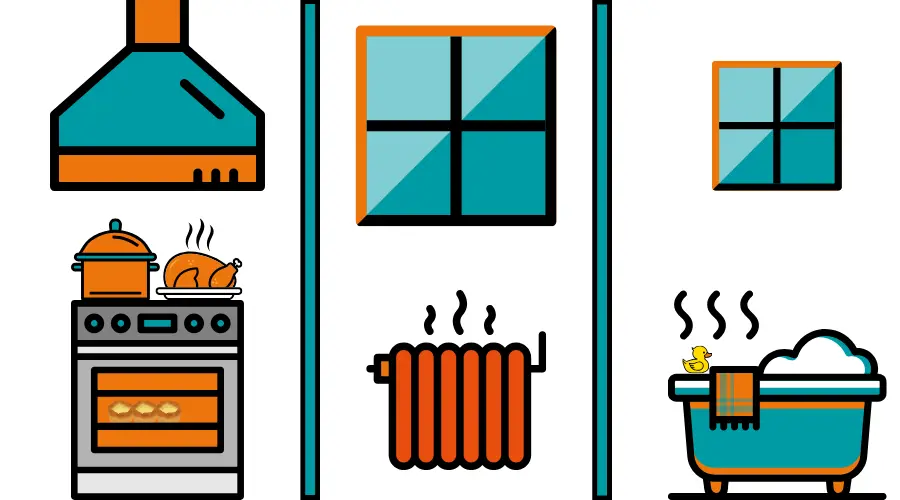
Act fast
As soon as you spot a problem with condensation, damp, or mould – follow our tips and see if things improve.
You don’t need to leave the mould in place for us to see when we inspect your home.
Safely removing mould
If the area is less than ten square metres, you can safely clean the mould by following these steps:
- Carefully remove excess mould and any loose material like flaking paint or wallpaper with a damp cloth or sponge. Throw the cloth or sponge away after using it.
- We recommend using a fungicidal wash that carries a Health and Safety Executive (HSE) approval number to clean the area. Make sure you follow the instructions for using it safely. You can buy fungicidal wash from many supermarkets and DIY stores.
- Allow the area to dry thoroughly.

Report it
If a damp or mould problem doesn’t go away when you’ve tried our tips, or you’re worried about it getting worse – report it to us.
If you don't know what's causing damp and mould in your home, or you think the problem is being caused by something that needs repairing, let us know as soon as possible.
Report an issue online using the button below. You can also call our Repairs Hotline on 01226 787878 or use our free app to report non-urgent repairs.
